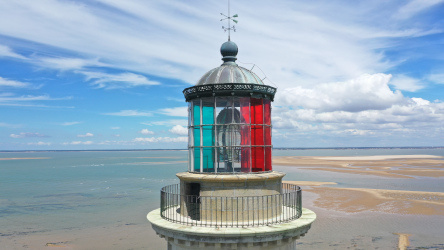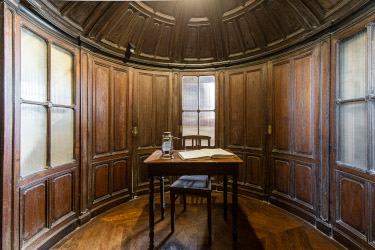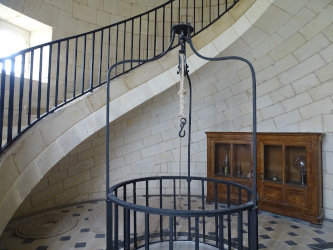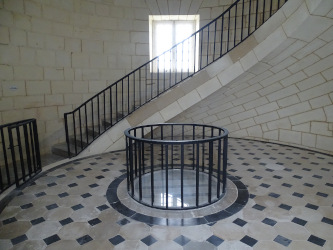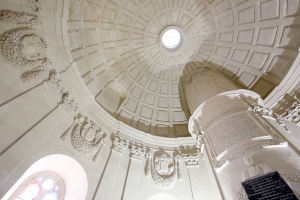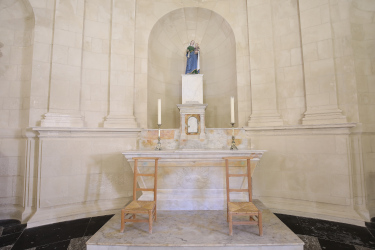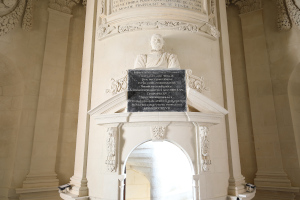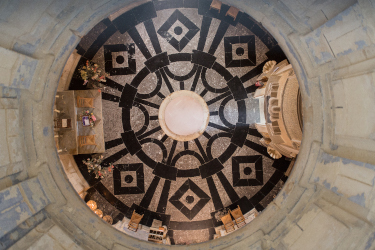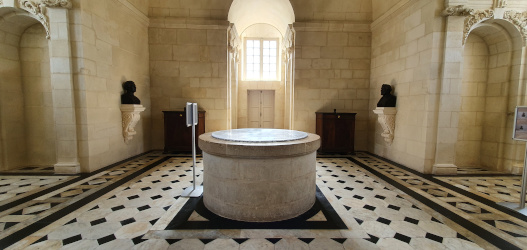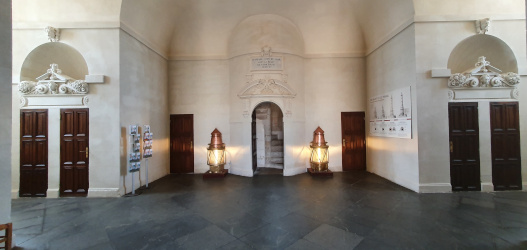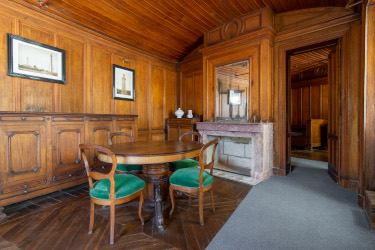Feets
Come in!
Cordouan is part of the monuments of Gironde estuary that can’t be missed.
Fancy a visit?
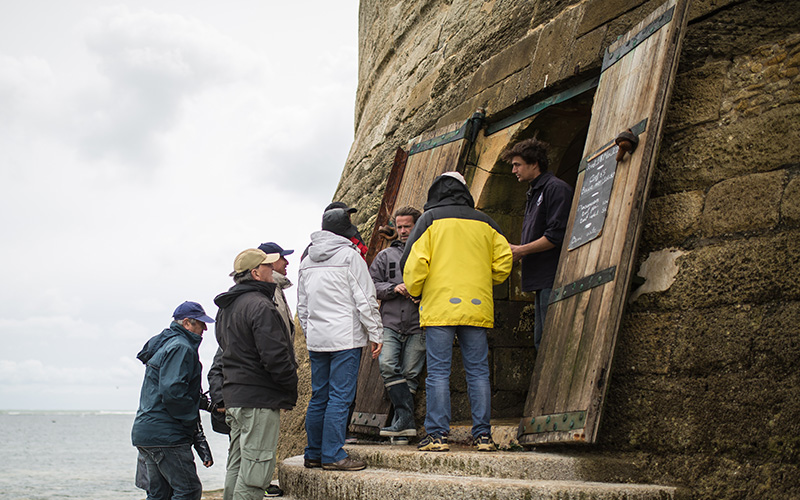
The lighthouse in numbers
Luminous range
Steps
North latitude
West longitude
International number
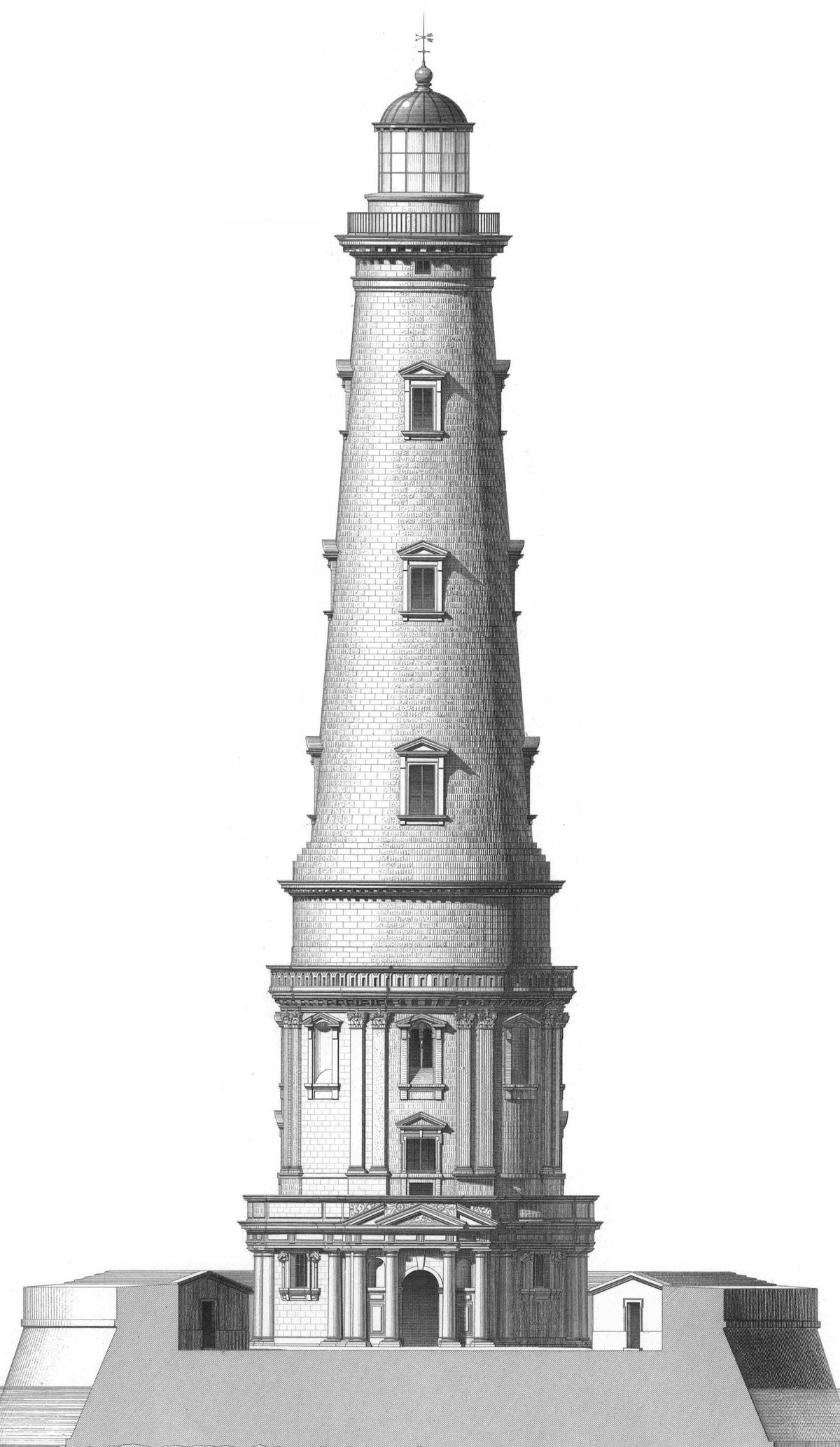
The beacon (7th floor)
After climbing the 301 steps, the balcony at the top of the lighthouse offers a breathtaking view of Gironde estuary.
Above the balcony you will find the beacon room (closed to the public) which was the laboratory of all technological lighting innovations for many centuries. Today, the beacon is equipped with a 250 W lightbulb that can be seen up to 40 km away.
The monitoring room (6th floor)
It was in this room that the lighthouse keepers took it in turns to supervise the lantern’s operation. Behind the wainscoting, there were two basic sleeping quarters.
This was also the place where surveillance reports were drawn up, indicating the times at which the lanterns were switched on and off, consumption levels and exceptional events.
The lights room (5th floor)
This room was originally used to store lighting materials.
From the first lighting of Louis de Foix’s tower in 1611 to today, many energy sources have been used for lighting: spermaceti, coal, colza oil, petroleum gas… and now power generators.
The counterweight room (4th floor)
Until 1987, this room housed the counterweight which was used to give rhythm to the fire in the light.
A counterweight dragged a rotating machine which in turn dragged a cover that rotated around the lightbulb which thus allowed for alternating between light and darkness.
Cordouan lighthouse was one of the first in the world to use this technique taken from the science of watchmaking.
Girondins room (3rd floor)
In 1786 the decision was made to raise the lighthouse more than 20m in order to provide more visibility to boats in Gironde estuary. This scientific, technological and architectural challenge was given to the architect Joseph Teulere who wanted to preserve the work of his predecessor, Louis de Foix.
In this room, the art of cutting and assembling stone (known as stereotomy) is exceptional: each stone is unique, and its position has been defined before cutting to ensure perfect interlocking of the stones. The staircase is supported by a vaulted ceiling, which curves into a cone, giving the ceiling its characteristic heart shape.
The chapel (2nd floor)
Cordouan is said to be the only lighthouse to have a chapel: that’s how unique it is! The chapel is the result of Henri IV’s desire to demonstrate his conversion to Catholicism and the monarchy of divine right, in continuity with his predecessors.
Although the busts of Louis XIV and Louis XV were removed during the French revolution, the inscription commemorating the two kings situated above the door was conserved as were the monograms of Henry III and Henry IV. The bust over the door is that of Louis de Foix, the first architect of Cordouan.
The apartment of the king (1st floor)
A symbol of royal power, Cordouan is exceptional among lighthouses in that it boasts an apartment dedicated to the king. A veritable ceremonial room, it features a floor paved with black and white marble and walls decorated with Ionic pilasters. But for the record, no sovereign has ever been to Cordouan!
The entrance hall (ground floor)
This square-plan room features small rooms barely 5m2 in size, which served as the guards’ bedrooms for almost two centuries. Comfort was rather spartan! Fortunately, living conditions for the guards have improved considerably since then, and their rooms are now located outside the tower, in the crown.
The engineer’s apartment (in the crown)
From the 19th century onwards, these two oak-panelled rooms were used by visiting engineers from the Lighthouses and Beacons department to monitor the operation of Cordouan.
